Results: Botanical Expeditions
Published on 06/10/2020
Let's take a mini botanical expedition and explore 5 carnivorous plants. The plants typically grow in areas where the soil is lacking in nutrients. They adapt by ingesting animal life, mostly insects, to provide the nutrients they need. Check out these plants and where you can find them.
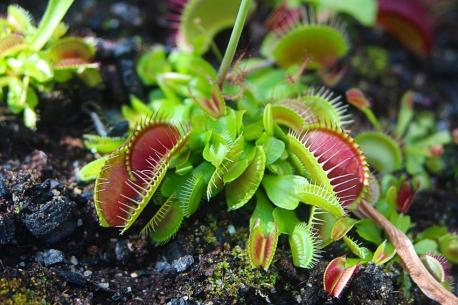
QUESTIONS
GO to COMMENTS
Comments
1.
1.
Venus flytrap - Perhaps the most famous carnivorous plant, and is native to a small region of North Carolina and South Carolina. They grow mainly in wet, mossy areas. Contrary to popular belief, carnivorous plants are not entirely carnivorous. They rely on the sun for most of their energy, but feed on small insects to provide additional nitrogen to help them grow in poor soil. The insect is quickly trapped inside by the spines. Glands inside the leaf secret an enzyme that breaks down the insect for digestion. After about 10 days, the insect is completely digested, and the leaf reopens to catch another victim. Are you familiar with this famous plant?

Yes
73%
1992 votes
No
27%
750 votes
2.
2.
Sundew - There are over 130 different species and they all look unique. They are found in tropical and temperate regions all over the world, and are most common in Australia. The plant can be as large as a small bush or as tiny as a penny; have long grass-like leaves or look like an exotic flower. They are commonly referred to as "flypaper plants." Tiny hairs protrude from the leaves, and each hair secretes a sticky substance that looks like a drop of dew. Insect gets stuck when they touch one of the hairs. The leaf folds over and completely envelops the insect. Do you think the substance on the leaves look like dew?
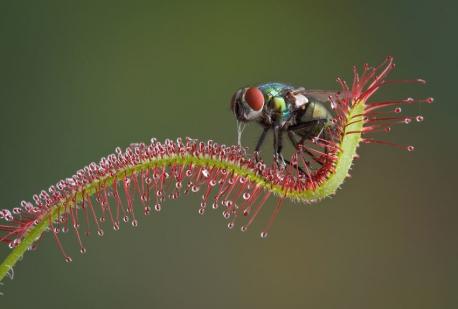
Yes
68%
1870 votes
No
32%
872 votes
3.
3.
Butterworts can be found all over the world, but the greatest number of species have been found in Mexico. When insects land on the leaves and get stuck, the plant emits enzymes and acids that break down the prey. Once liquefied, the plant absorbs the nutrients. In cold climates, butterworts go dormant during the winter months. In warmer climates, they stop producing their sticky enzymes and become non-carnivorous for a few months. They look like any other flower, and some people keep them in their homes for their beautiful colors. Do you have a butterwort as a houseplant?
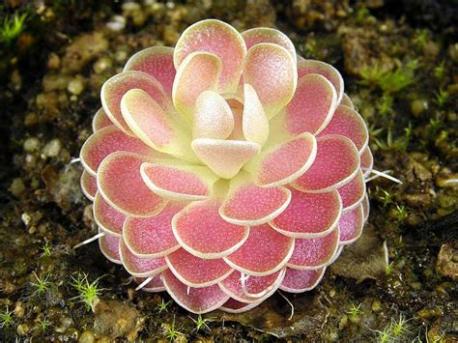
Yes
8%
218 votes
No
92%
2524 votes
4.
4.
Pitcher plants are long tubes with a pool of digestive enzymes in the bottom that form a pitfall trap. At the top of the opening is a small lip where insects are attracted to the toxic nectar. The stunned insects drop into the pit and a waxy coating on the inside prevents escape. Different varieties can be found on every inhabited continent. Some of the largest pitcher plants can be found in Madagascar, Southeast Asia, and Australia. Any sightings of this plant in your neighborhood?
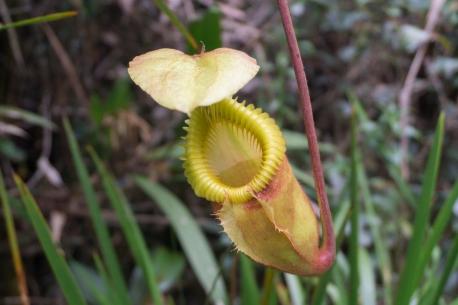
Yes
9%
243 votes
No
91%
2499 votes
5.
5.
Bladderwort - lacks roots and floats on water - They are found in streams, lakes, and waterlogged soil throughout the world. Each plant has hundreds of sacs stretched over horizontal stems. When an insect larva, aquatic worm, or water flea gets too close, the sac opens, creating a vacuum that sucks the nearby water inside along with its snack. It is considered the quickest plant on Earth and can open and close in 1/35 of a second. The trap can be reset within 15 to 30 minutes. They can also be grown as houseplants. Would you like to observe this speedy plant up close and personal?
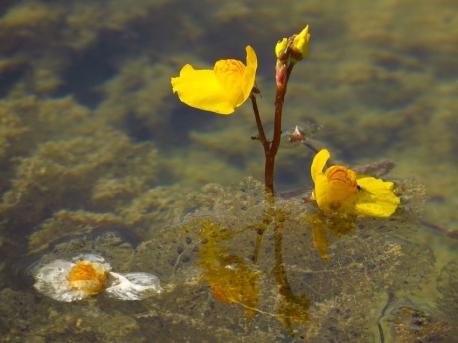
Yes
49%
1333 votes
No
51%
1409 votes
COMMENTS


